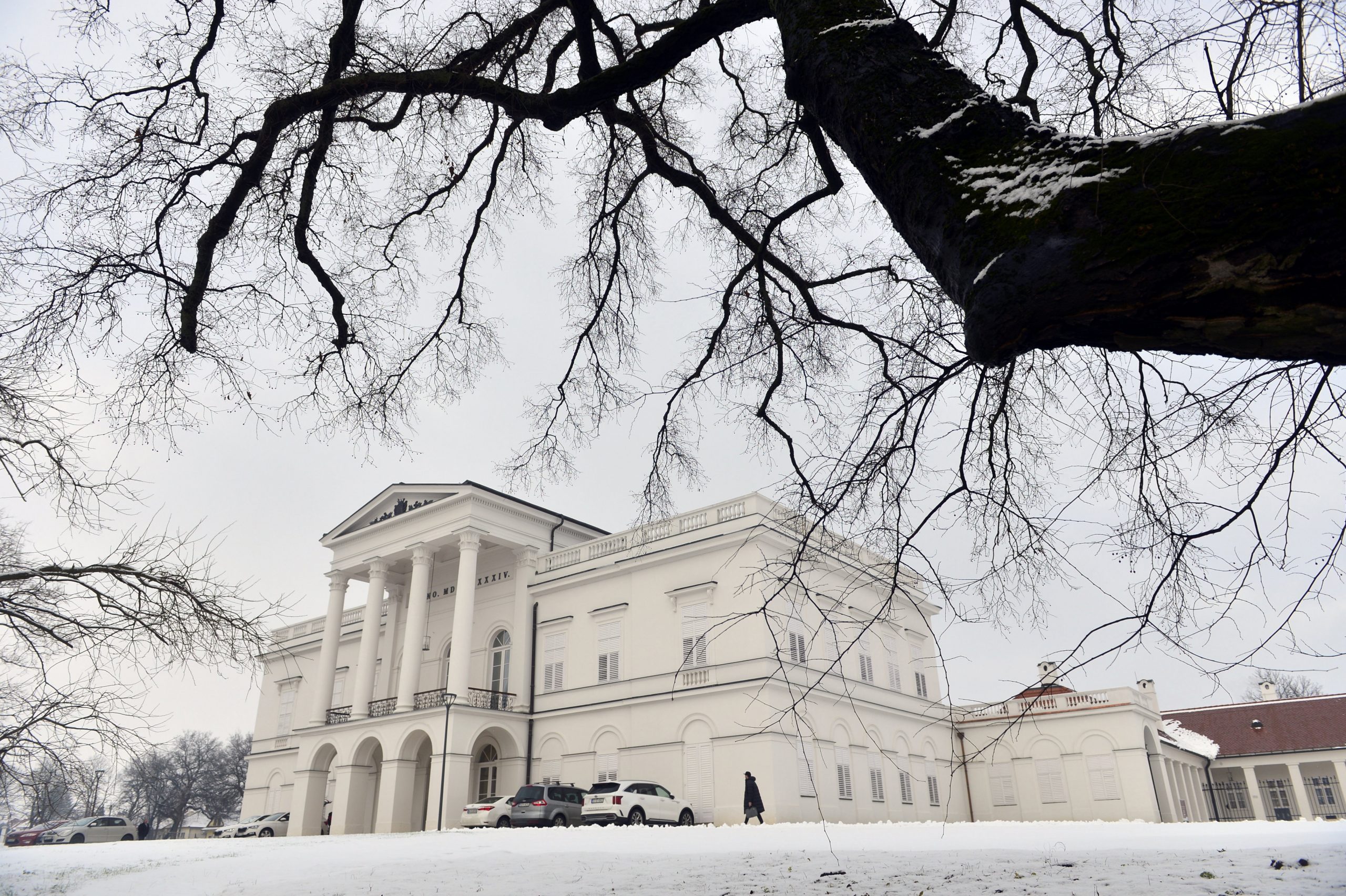
The castle revamp projects also involve adding new functions to meet modern tourism demands.Continue reading
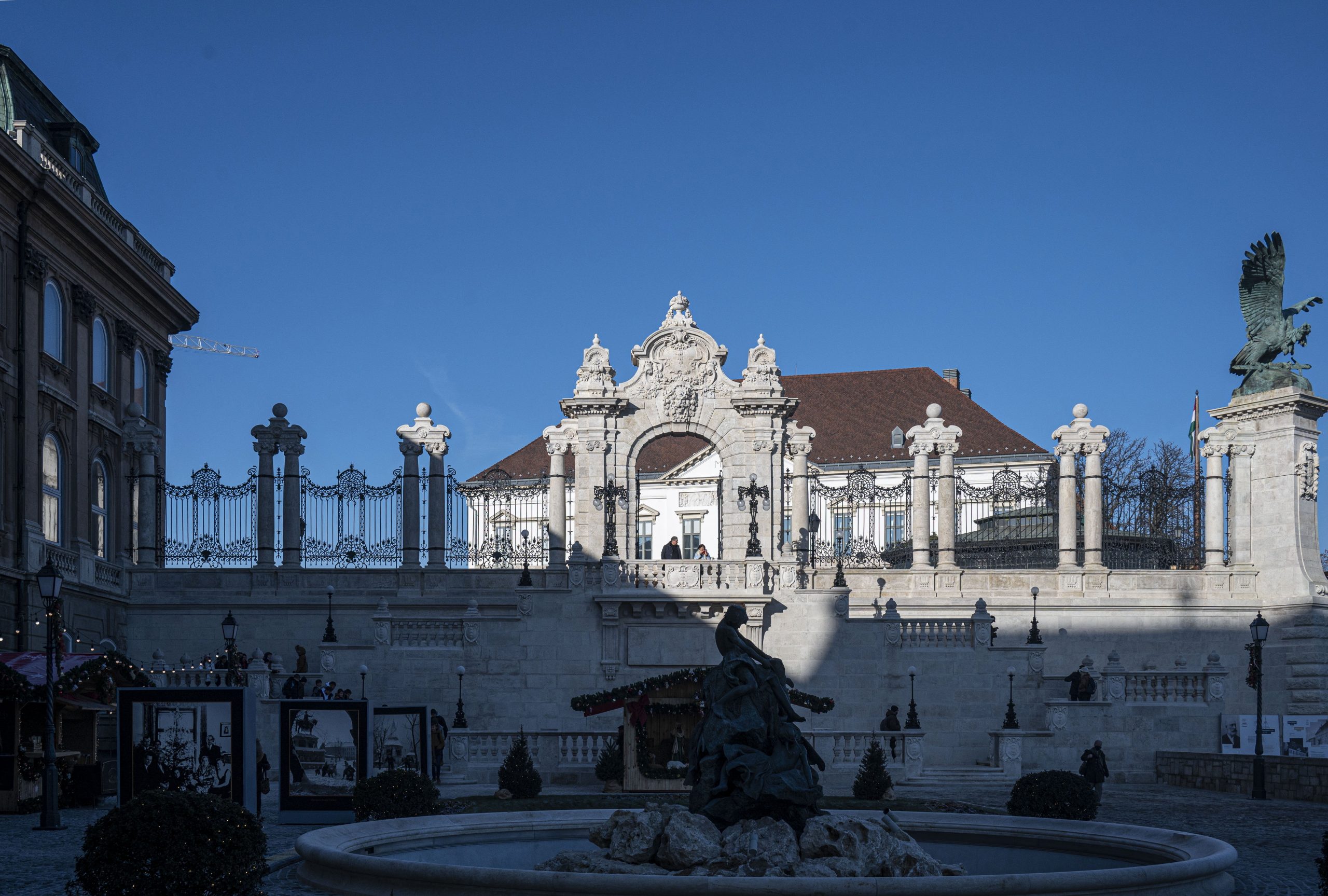
In 2014, the Hungarian government started the National Hauszmann plan with the aim of rebuilding those buildings which were destroyed either during WWII or communism, true to their original forms. This should simultaneously increase the quality of life of the local population, ensure the renaissance of the Hungarian national identity of the 21st century, and enrich the architectural heritage and natural values of the country.
This article was originally published on our sister-site, Ungarn Heute.
The Budapest Castle District on the Buda side can look back on a 750-year-old history. In the last centuries, it was the scene of several wars and occupations. Besides the Ottomans and the Habsburgs, it was also occupied by the Germans and the Soviets. Before the Second World War, not only the residence of the head of state was located in the Castle Palace, but also the office of the Prime Minister and the ministries were located in the immediate vicinity. The beautiful buildings suffered considerable damage during the Second World War, but it was the subsequent communist system that gave it the coup de grace: numerous buildings that remained unharmed or only slightly damaged after the war were demolished or remodeled by the new regime in the 1960s or 1970s for ideological reasons. As a result, the hitherto relatively uniform architecture of the castle district was lost.

Castle Palace 1943 – Source: Fortepan
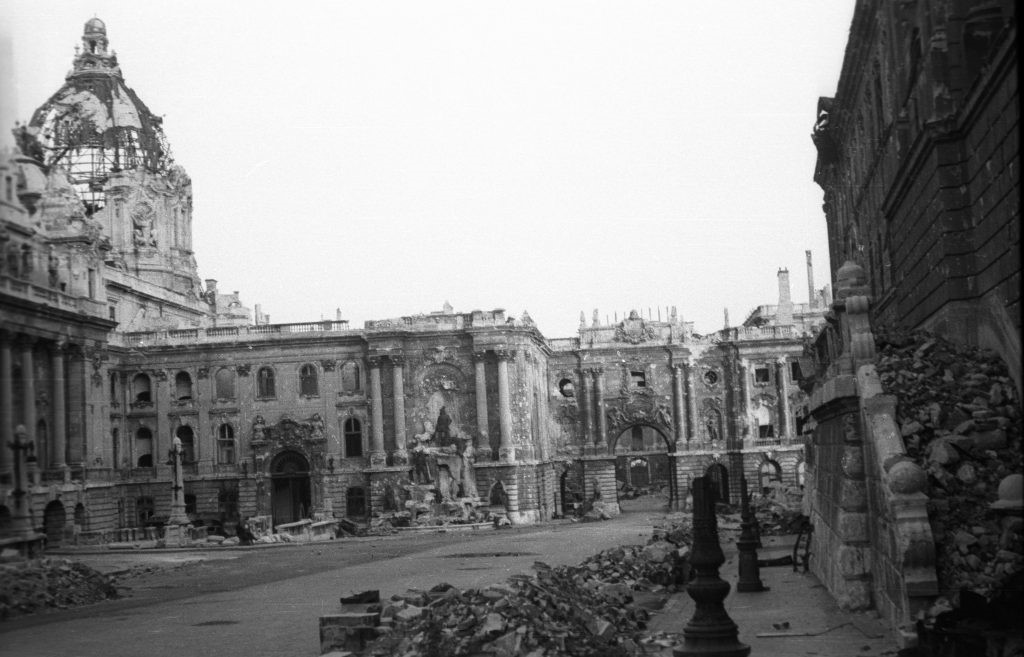
Castle Palace 1943 – Source: Fortepan
The second Orbán-led government (2010-2014) decided to wake the castle district from its “Sleeping Beauty” sleep by rebuilding the demolished buildings and providing them with new functions and restoring the original architecture, which was “modernized” in the 1960s. In 2011 they first began with the renovation of the Castle Garden Bazaar, built in 1883 at the foot of Castle Hill under the Castle Palace, which was closed in 1984 due to its bad condition. It was reopened in 2014. In July of the same year, the National Hauszman plan was announced (since 2019: National Hauszman program), according to which the buildings in the castle were to be rebuilt true to the originals so that the “representative, cultural, and touristic function of the Castle District will be strengthened.” The program was named after the Hungarian architect Alajos Hauszmann (1847-1926), who led the reconstruction of the castle palace at the turn of the century.
The renovation of the Carmelite Monastery next to the Palais Sándor came next. The building, which used to be home to the Castle Theater, was reopened as the office of the Prime Minister after the renovation in early 2019.
The complete reconstruction of two destroyed buildings, the Royal Riding Hall and the Royal Guard Building, was also completed. Although both buildings suffered only minor damage during the Second World War, they were completely demolished in the following decades of communism for ideological reasons. In addition, the Csikós Courtyard and the Stöckl Staircase right next to the Royal Guard Building were also rebuilt as part of this work.
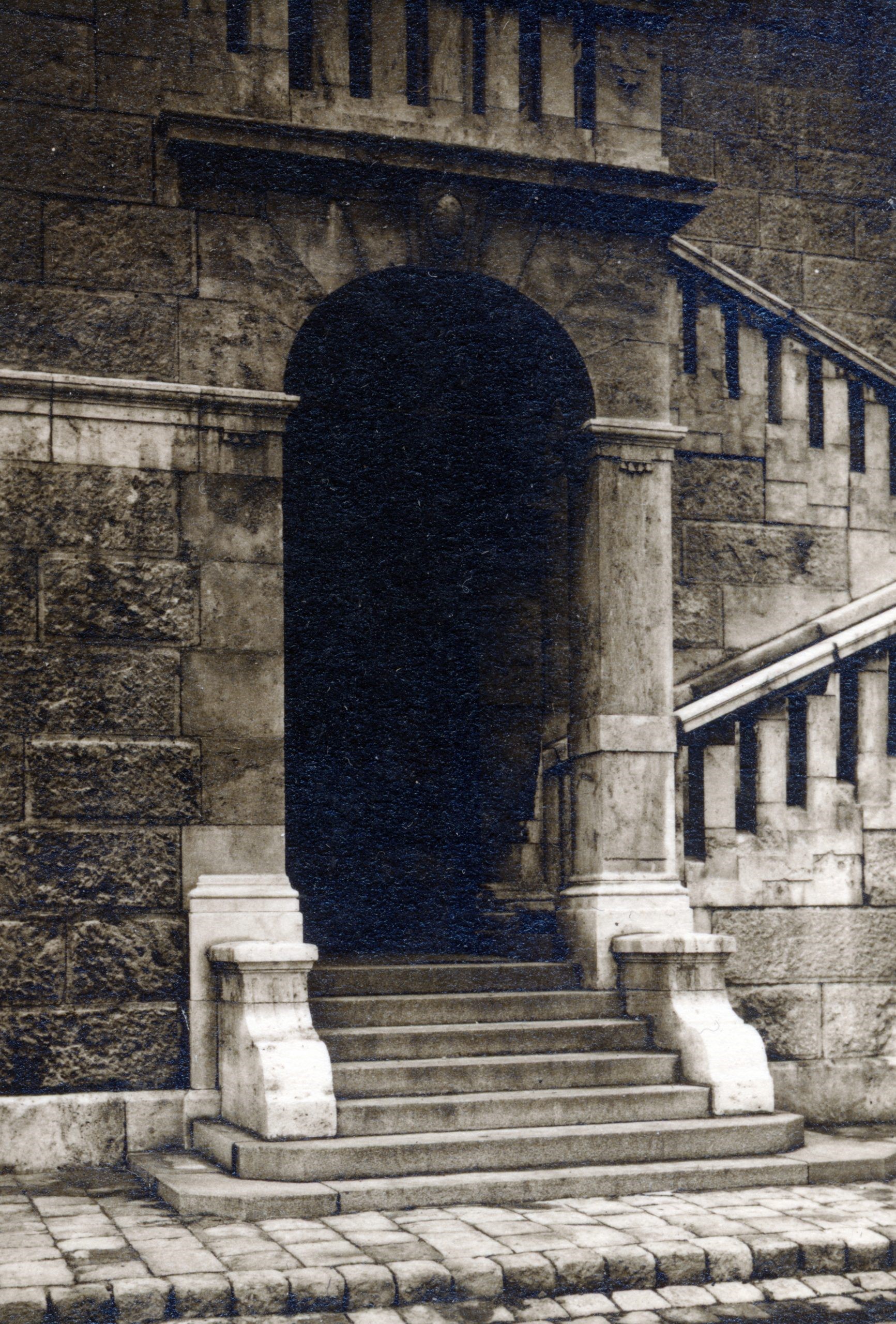
Stöckl-Staircase, 1930 – Source: Fortepan / Mariann Olbert
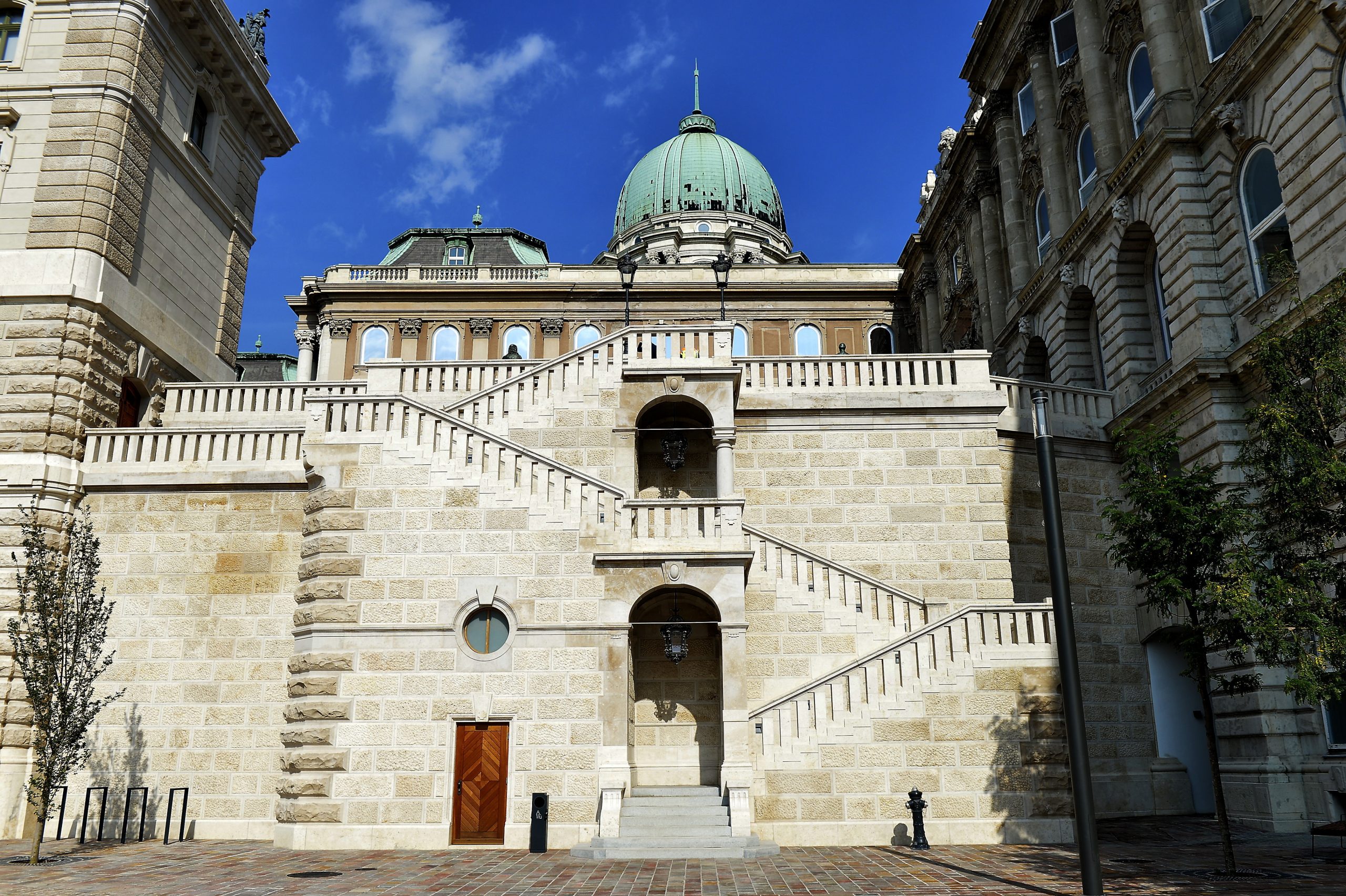
In 2021, Photo: Lajos Soós/MTI
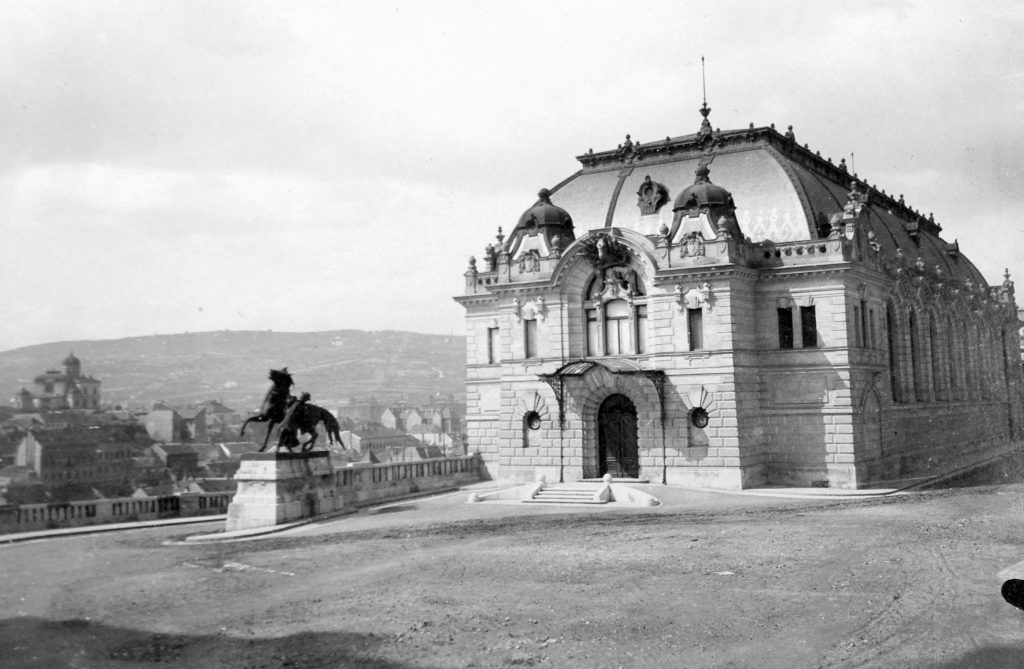
Royal riding hall 1915 – Source: Fortepan
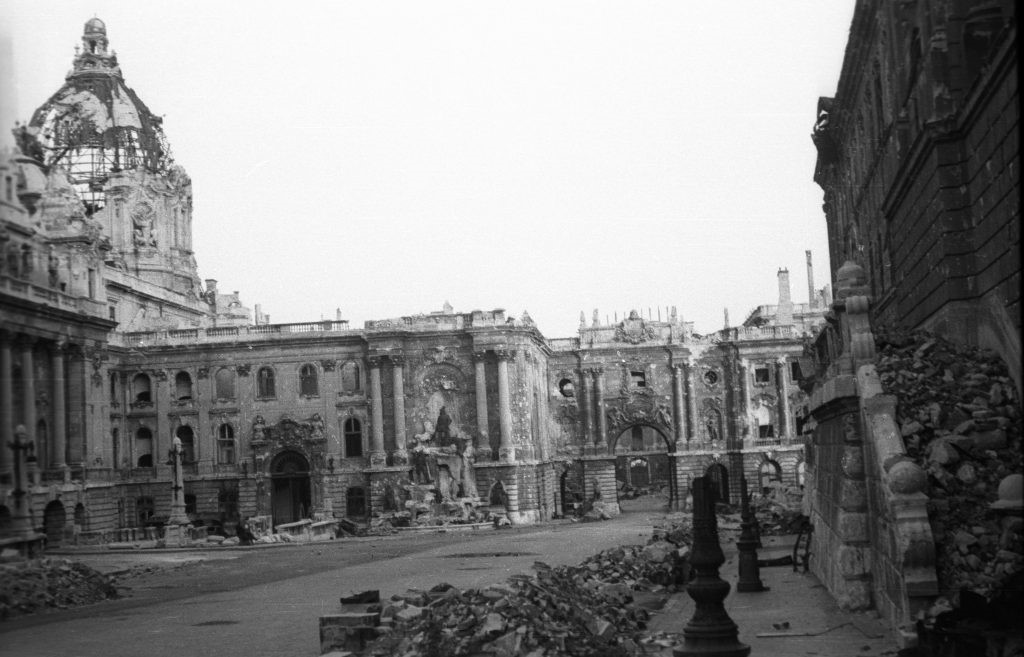
Royal riding hall 1945 – Source: Fortepan/Red Army (Vörös Hadsereg)

Royal riding hall 2021 – Source: MTI/Soós Lajos
A real sensation was the reopening of Saint Stephen’s Hall in the Castle Palace on August 18, 2021. The state hall, built in the Romantic style, was destroyed by a bombing raid during World War II and later completely rebuilt both inside and out. The complete interior was made according to Hauszmann’s original plans.
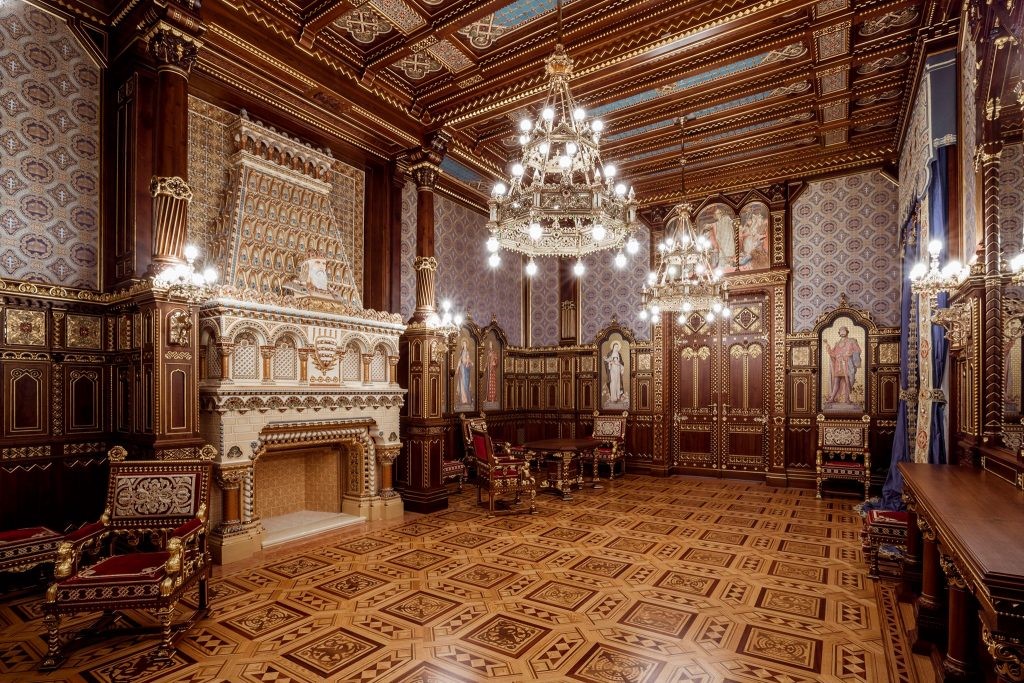
The reconstructed Saint Stephen’s Hall in the Castle Palace – Source: Szent István-terem a Budavári Palotában – Facebook
In the coming years, the reconstruction of the Palace of Archduke Joseph, on the place of honor of the buildings of the Red Cross and the High Command of the Hungarian Armed Forces will begin on Saint George’s Square. In addition, the tower of the Hungarian National Archives, which was demolished after the Second World War, will also be restored.
A full renovation of the Fountain of the Fishing Children is also complete. The fountain, which was originally built in 1900 by the design of Károly Senyei, had been inactive for many years due to insulation problems and broken pipes.
The terrace of the renewed Fountain of the Fishing Children was transformed into a festive atmosphere, with a nativity scene and a small Advent market. Visitors will also find mulled wine, hot tea, strudel, and other delicacies in the little houses every day until January 6.
The tradition of outdoor exhibitions will continue as well. In “Christmas on Castle Hill,” photos and related stories will take us back to the Christmas atmosphere and traditions of the Castle District in the last century. They give us a glimpse of the special Christmas celebrations of the guards or the fun had by children sledding in front of Matthias Church.
And as for the Castle Palace, the former residence of the head of state, it was announced on December 3 that the detailed survey has been completed and planning has begun for the complete production of the building complex. The goal is to return the palace to its original turn-of-the-century form. The original length of the rooms opening into each other of 350 meters was the second largest after Versailles in Europe.
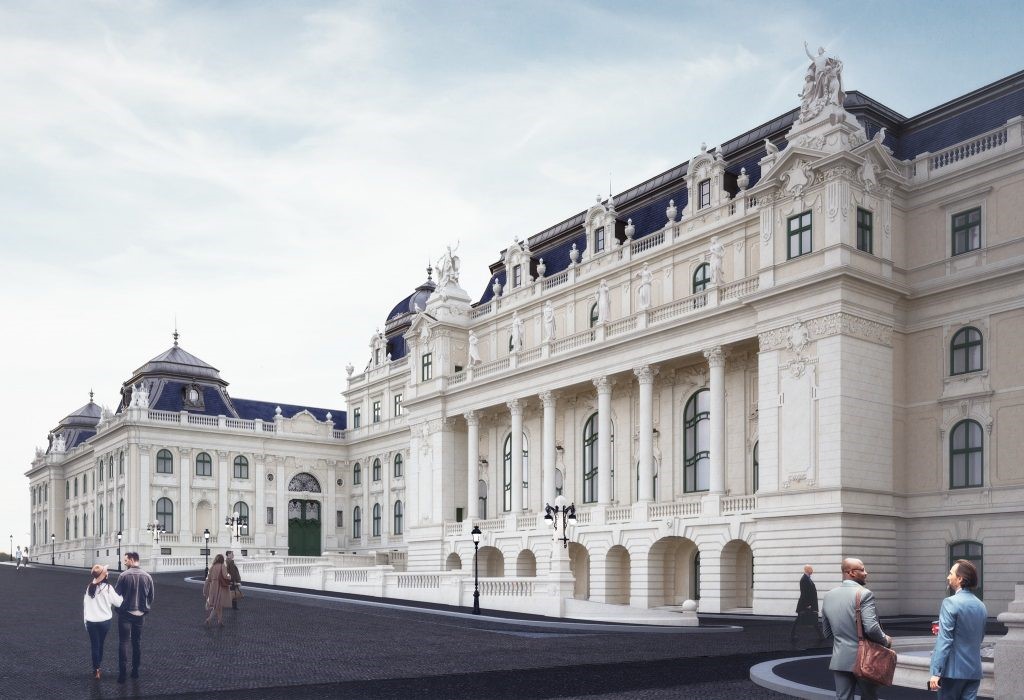
Planned reconstruction of the Castle Palace – Source: Nemzeti Hauszmann Program – Facebook
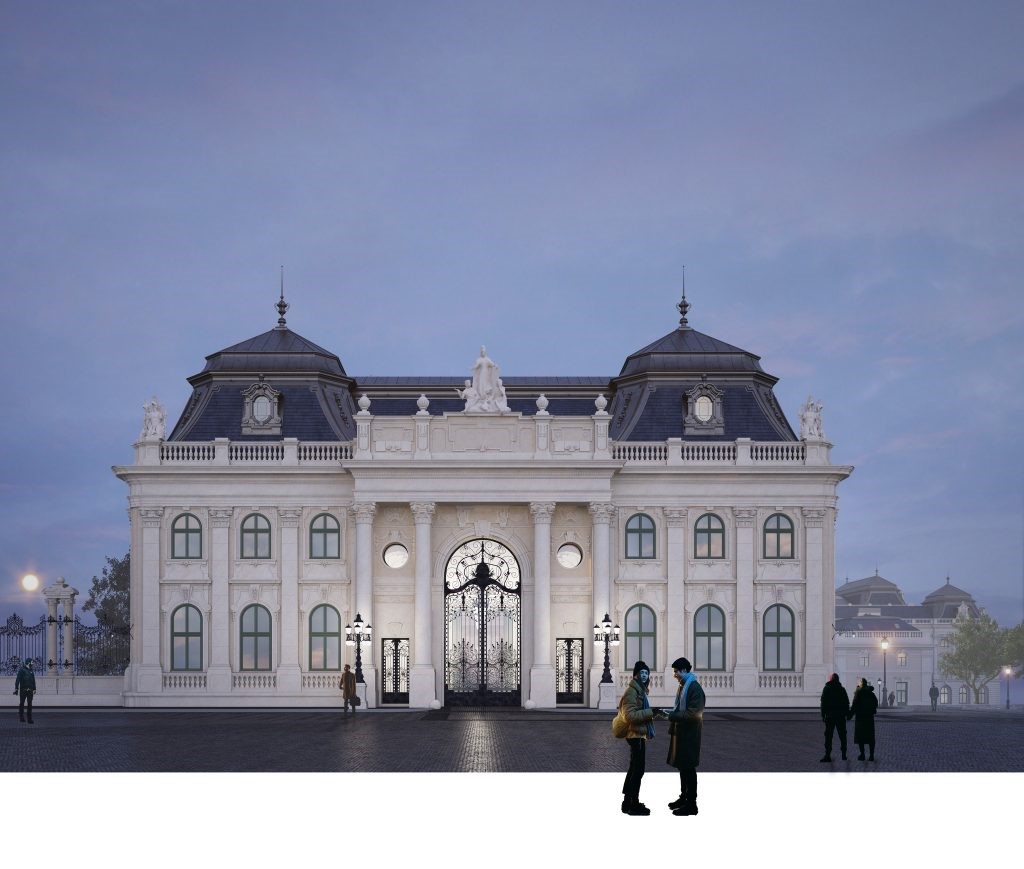
Planned reconstruction of the Castle Palace – Source: Nemzeti Hauszmann Program – Facebook
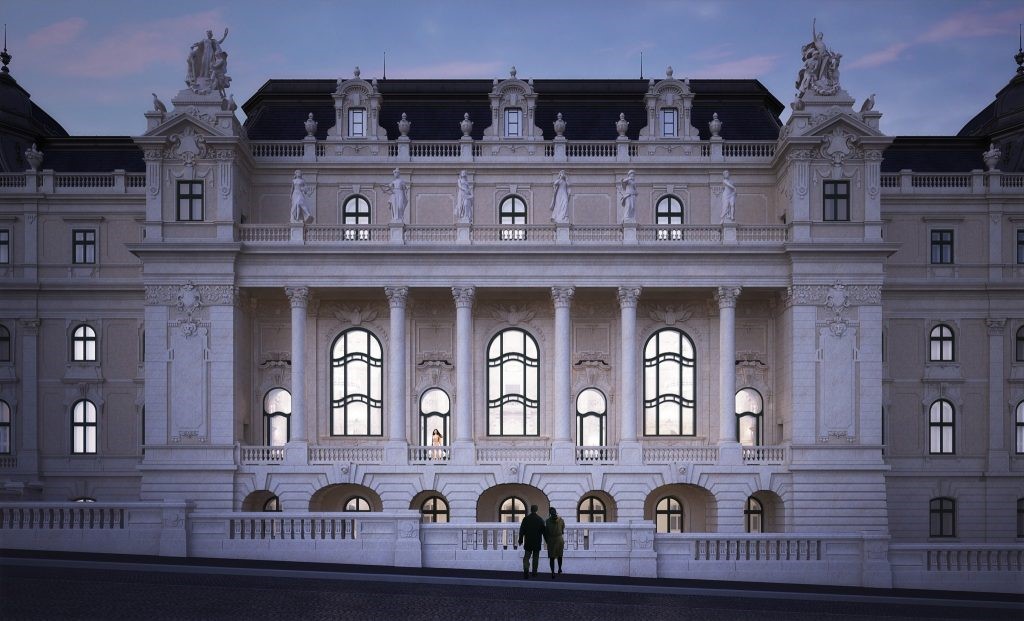
Planned reconstruction of the Castle Palace – Source: Nemzeti Hauszmann Program – Facebook
Source: nemzetihauszmannprogram.hu, epiteszforum.hu, pestbuda.hu, index.hu
Featured image: The restored Habsburg Gate and its fence, with the grandiose marketplace statue of Gyula Donáth on the right, in the Buda Castle district on December 14, 2021. Photo by Zsolt Szigetváry/MTI